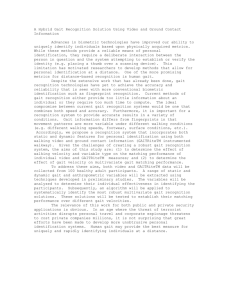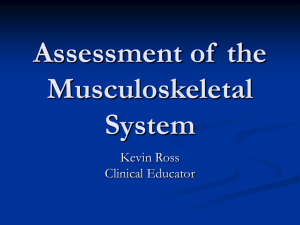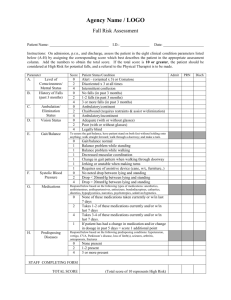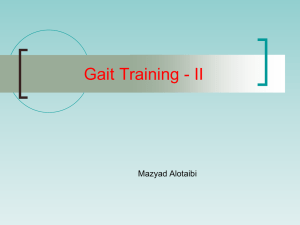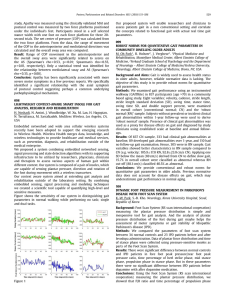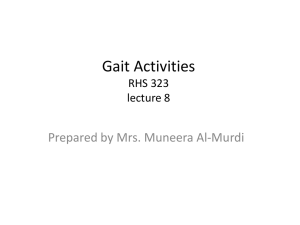Gait Training Aids
advertisement
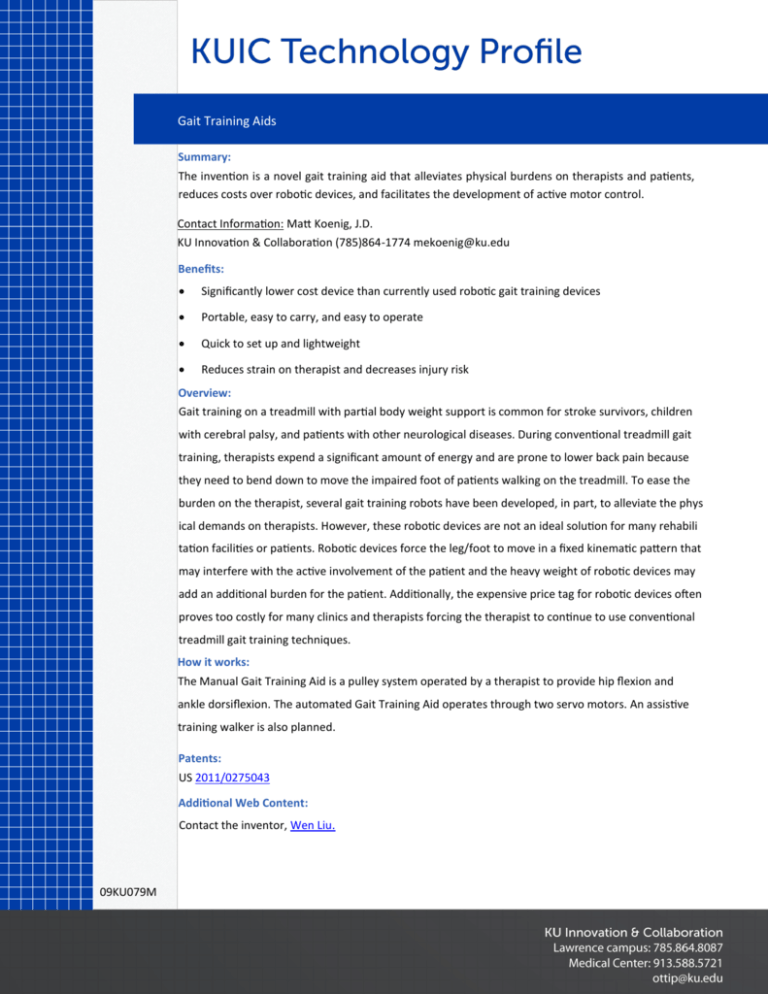
Gait Training Aids Summary: The invention is a novel gait training aid that alleviates physical burdens on therapists and patients, reduces costs over robotic devices, and facilitates the development of active motor control. Contact Information: Matt Koenig, J.D. KU Innovation & Collaboration (785)864-1774 mekoenig@ku.edu Benefits: Significantly lower cost device than currently used robotic gait training devices Portable, easy to carry, and easy to operate Quick to set up and lightweight Reduces strain on therapist and decreases injury risk Overview: Gait training on a treadmill with partial body weight support is common for stroke survivors, children with cerebral palsy, and patients with other neurological diseases. During conventional treadmill gait training, therapists expend a significant amount of energy and are prone to lower back pain because they need to bend down to move the impaired foot of patients walking on the treadmill. To ease the burden on the therapist, several gait training robots have been developed, in part, to alleviate the phys ical demands on therapists. However, these robotic devices are not an ideal solution for many rehabili tation facilities or patients. Robotic devices force the leg/foot to move in a fixed kinematic pattern that may interfere with the active involvement of the patient and the heavy weight of robotic devices may add an additional burden for the patient. Additionally, the expensive price tag for robotic devices often proves too costly for many clinics and therapists forcing the therapist to continue to use conventional treadmill gait training techniques. How it works: The Manual Gait Training Aid is a pulley system operated by a therapist to provide hip flexion and ankle dorsiflexion. The automated Gait Training Aid operates through two servo motors. An assistive training walker is also planned. Patents: US 2011/0275043 Additional Web Content: Contact the inventor, Wen Liu. 09KU079M

